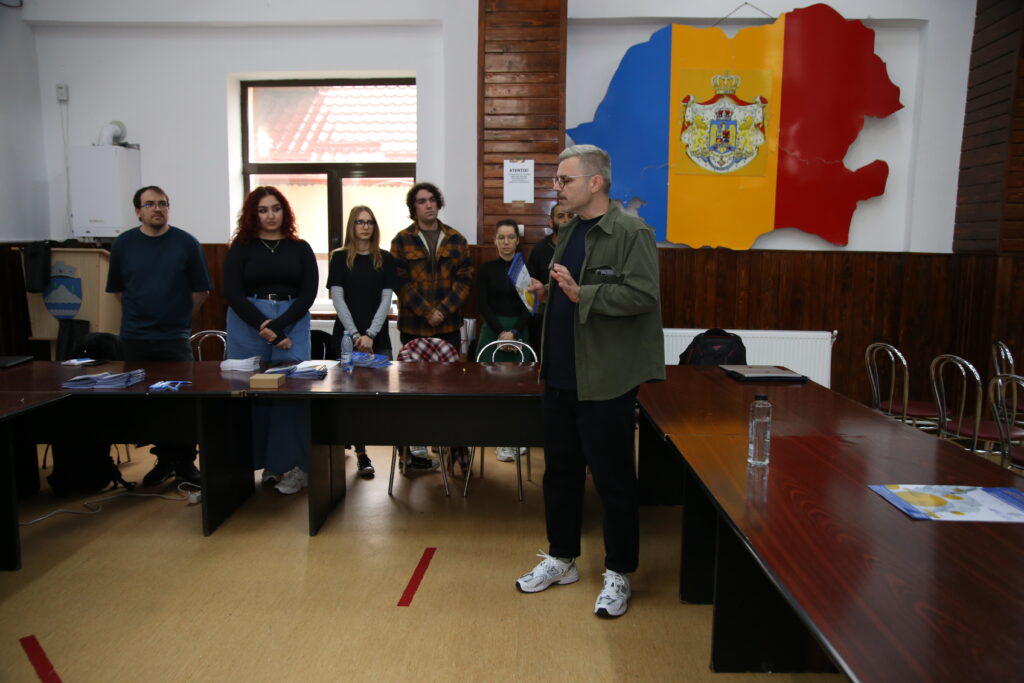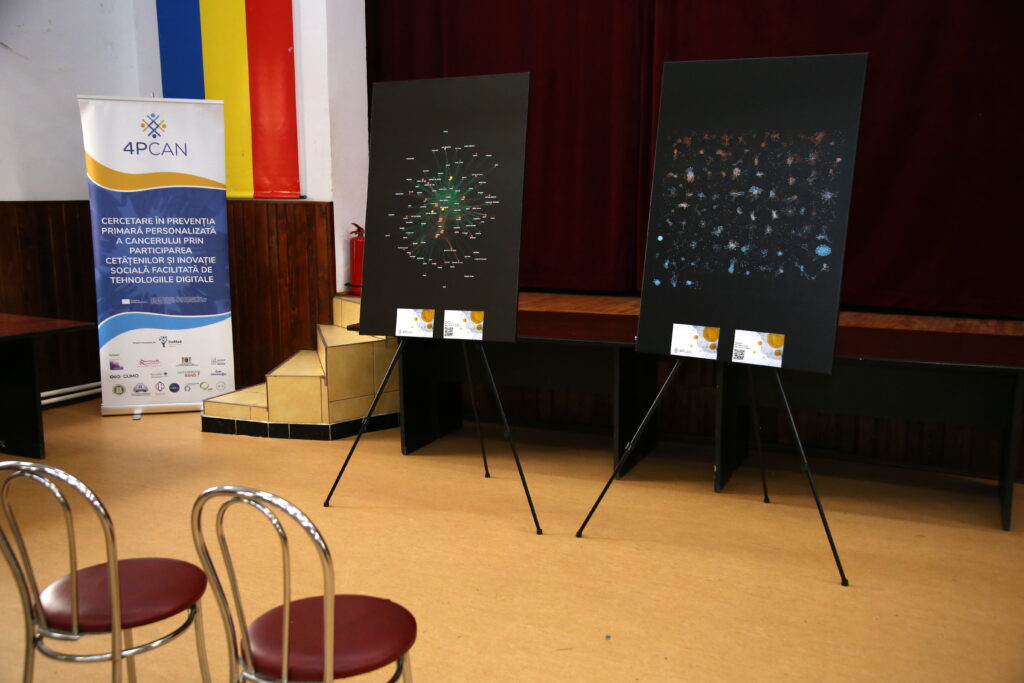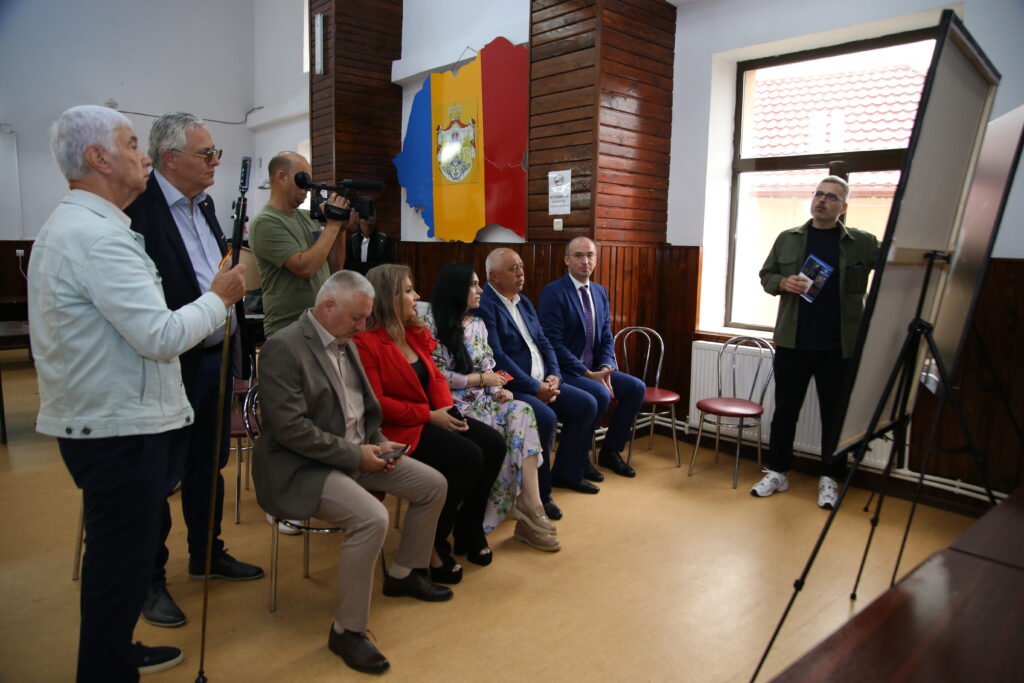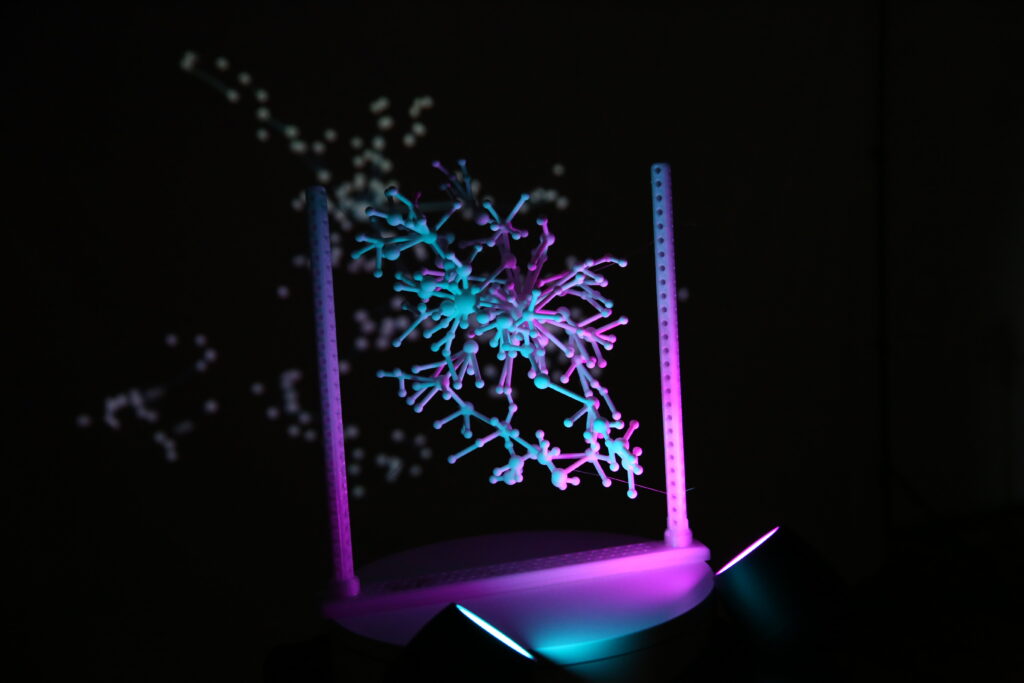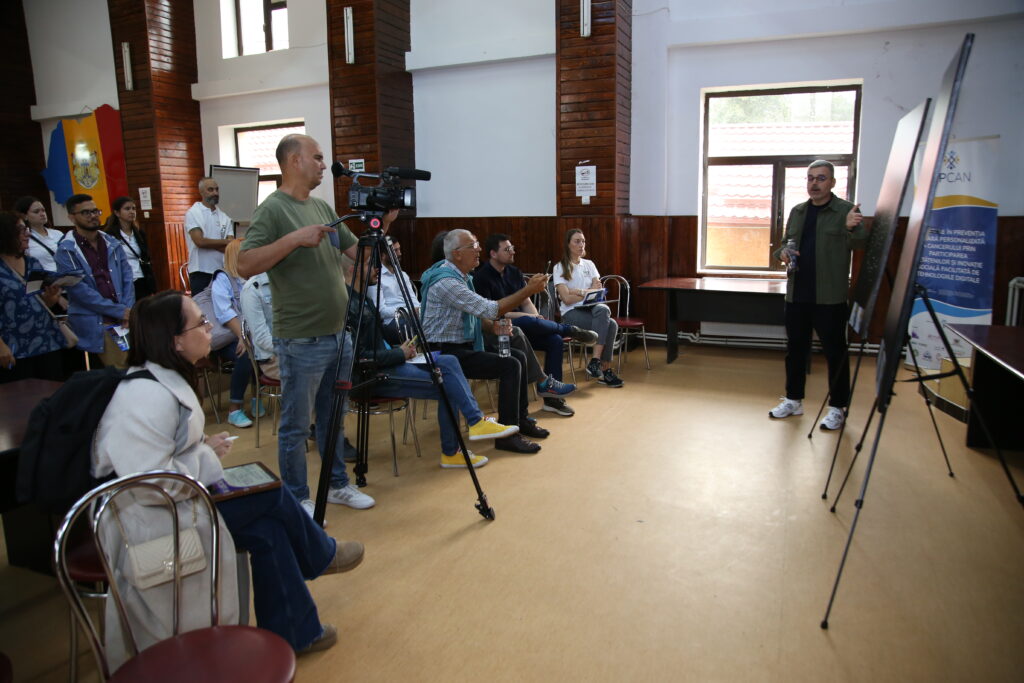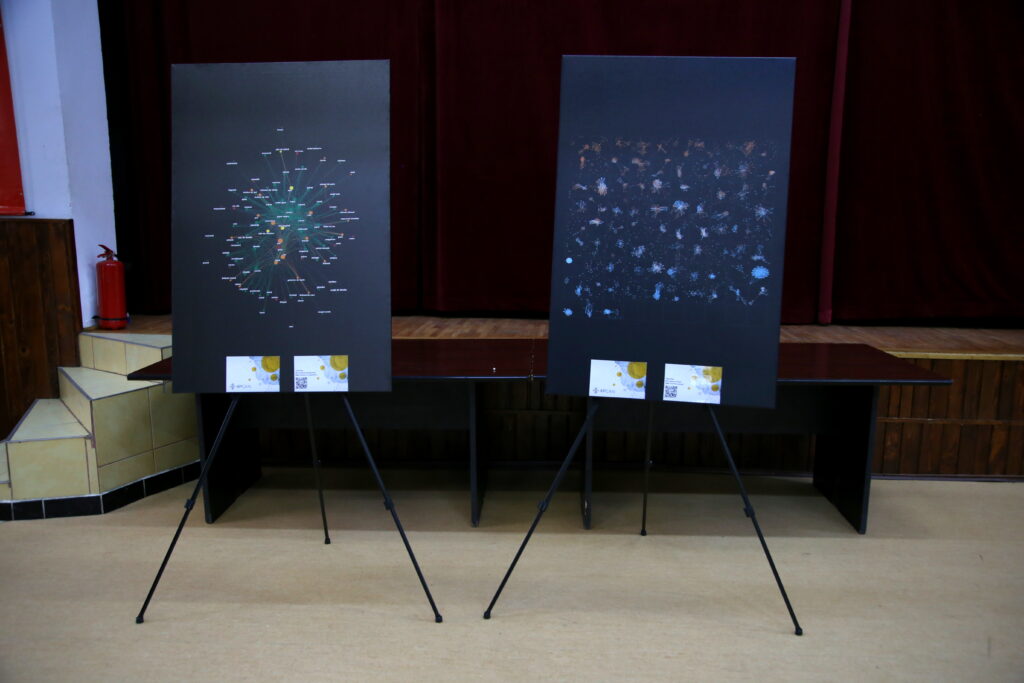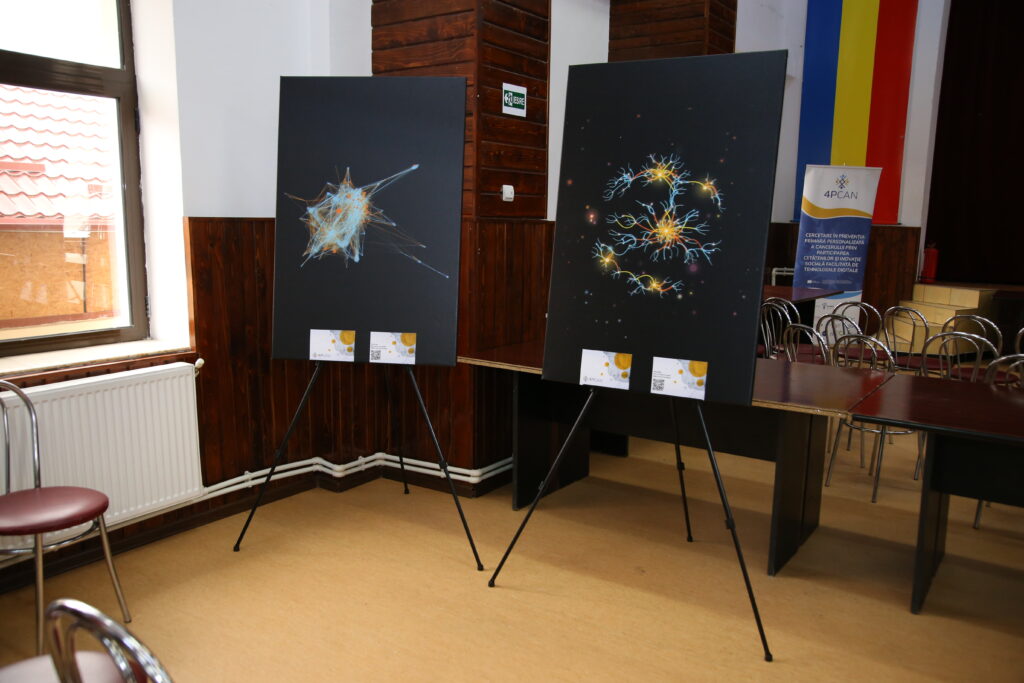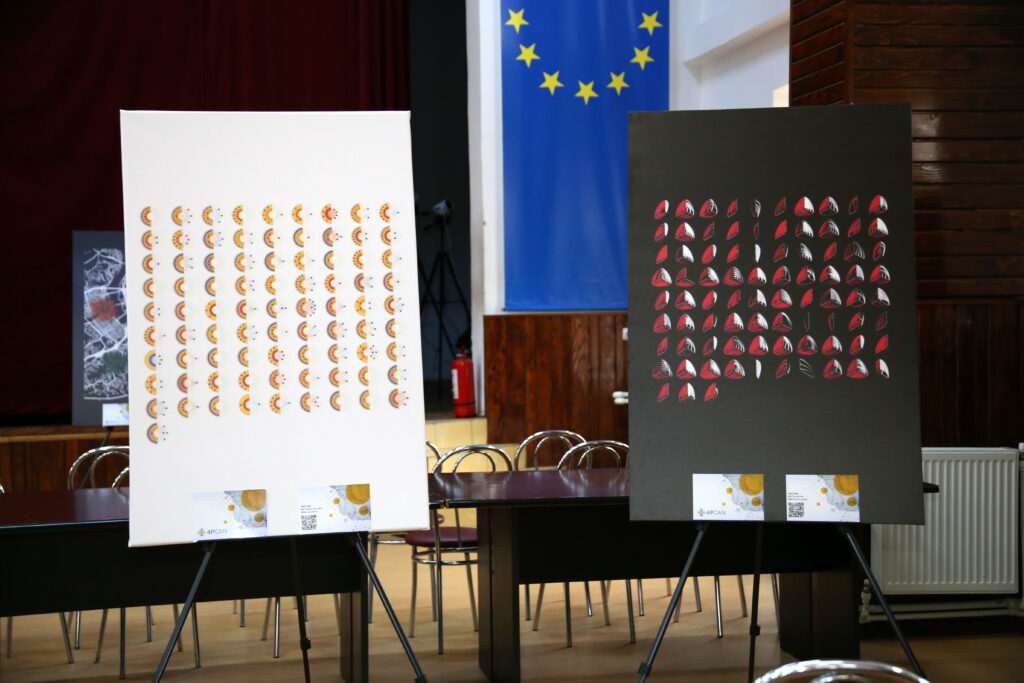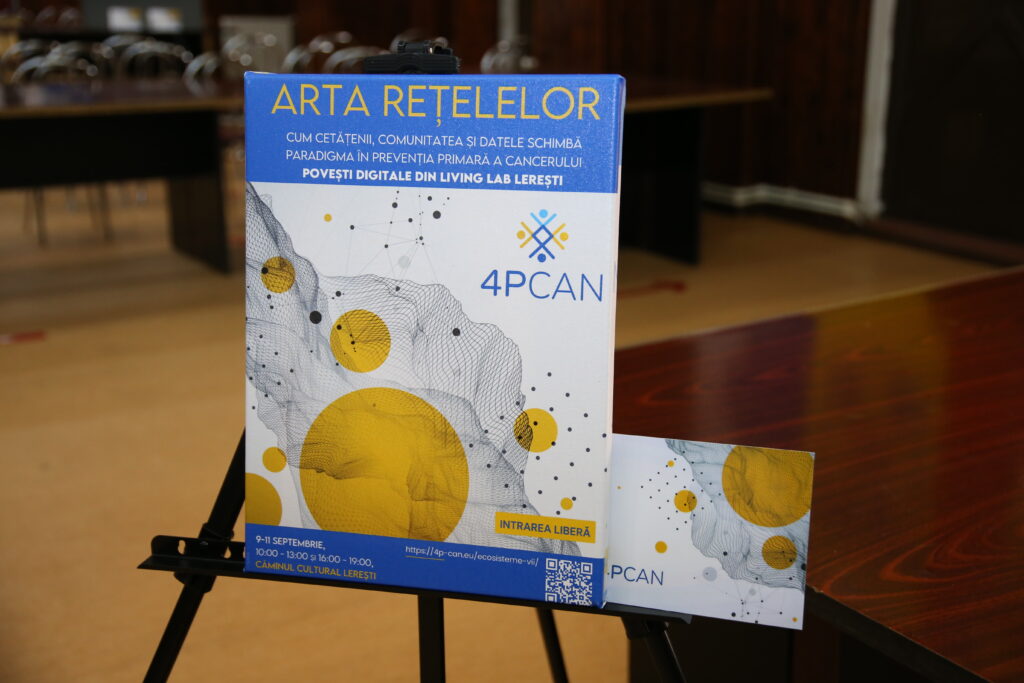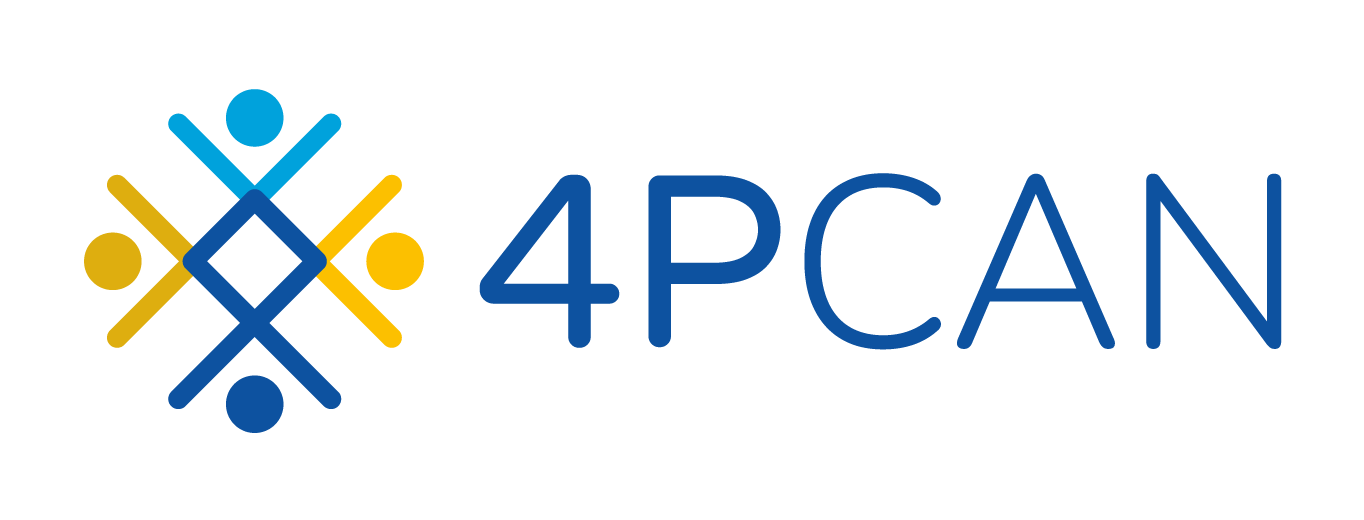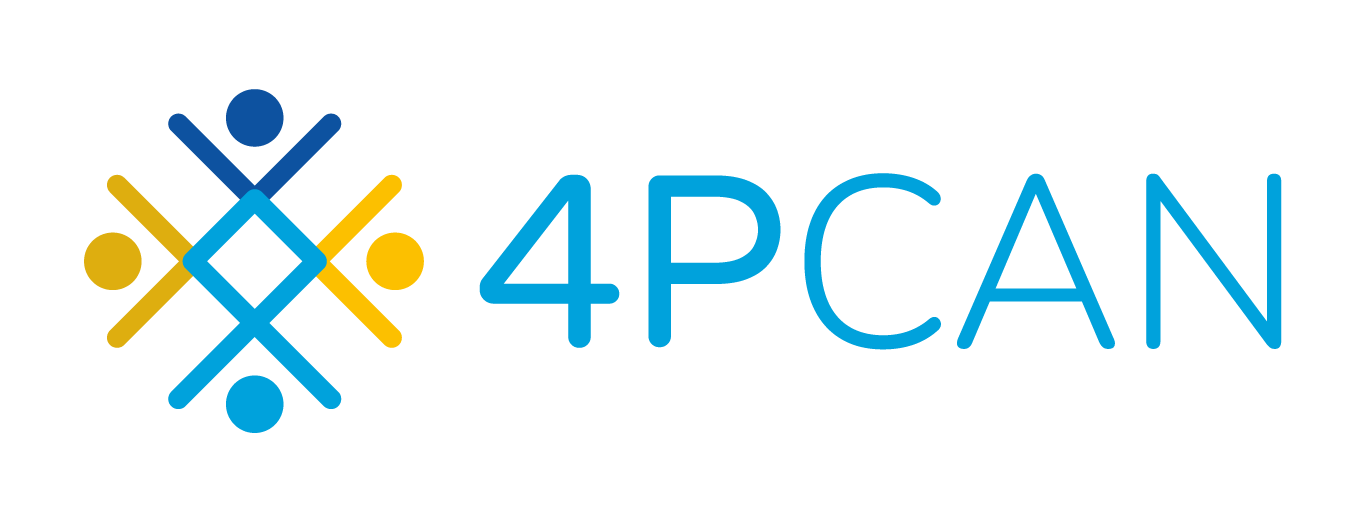From 9–11 September 2025, the artistic exhibition The Art of Networks was hosted at the Living Lab in Lerești, Romania. The exhibition presented stories of the local community through artworks created from data collected from the people living in Lerești. The paintings highlighted how citizen engagement, community collaboration, and data sharing can help transform approaches to primary cancer prevention.
Based on extensive interviews with individuals from Lerești, each artwork visually represents specific data from the community: connections between individuals, vaccination decisions within family/friends circles, eating habits, smoking habits, and geographic distribution of certain health behaviours.
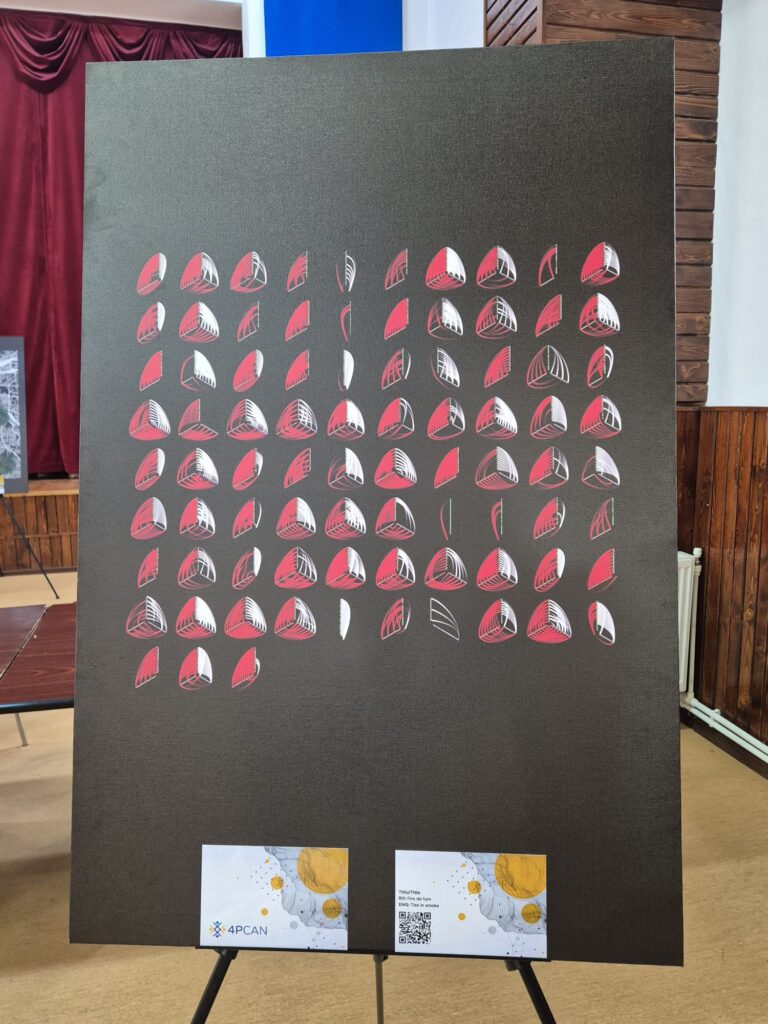
The canvas Ties in smoke shows how smoking is deeply embedded in the social fabric of everyday life. Each image represents the close contacts of one respondent from Lerești, organised by smoking status: red for smokers, blue for former smokers, and green for non-smokers. Red lines connect smokers to the other groups. Behaviour is socially embedded: smoking practices diffuse across networks of friends, relatives, and acquaintances. Dense groups of red ties reveal environments where smoking is normalised and reinforced. Where red lines are fewer or absent, we can expect contexts in which smoking is more socially isolated. From the perspective of cancer prevention, these patterns show that quitting smoking depends not only on individual willpower but also on collective influence. The engagement of communities (non-smokers, former smokers and informal leaders) creates protective ecosystems where healthy norms spread, demonstrating that social ties can be powerful allies in reducing tobacco-related risks.
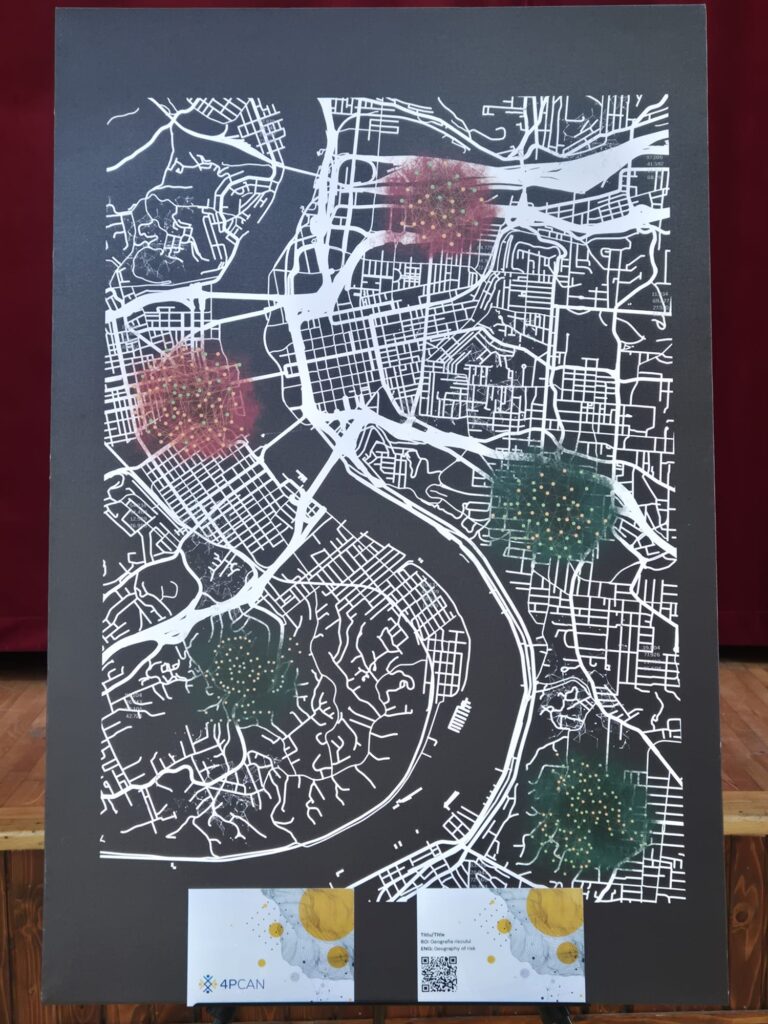
Another example of canvas is Geography of risk. This highlights that a society’s health patterns have a geographic imprint: health is not only socially organised but also spatially non-random, clustering into community ‘hot spots’ where certain behaviours take root and spread from person to person. Red zones mark places where unhealthy habits such as smoking, excessive drinking, or eating salty processed food circulate through the community like an invisible infection. Green zones are health sanctuaries, social spaces where people exercise, eat balanced meals, and positively influence one another. What we see on the map are not just streets and spaces, but invisible pathways through which daily habits are transmitted. To prevent cancer, it is not enough to ask individuals to change on their own; we need to transform entire spaces in the community from red zones into green ones, creating places where health becomes contagious. Gyms, schools, and fresh produce markets can become the new hot spots, this time for habits that protect us, not those that make us ill.
This initiative shows that, by identifying connection patterns and networks from a community, we can identify key elements to actively involve citizens as agents of change.
The Art of Networks exhibition is the result of the work of Prof. Gabriel-Marian Hâncean, Bianca-Elena Mihăilă, Bogdan-Adrian Vidrașcu, Iulian Oană, Maria-Alexandra Roșu, Antonin Tron-Lozai, and Andreea Moise from the Center of Innovation in Medicine (INOMED). Further details on the artistic exhibition are available at https://4p-can.github.io/Leresti-digital-stories/
